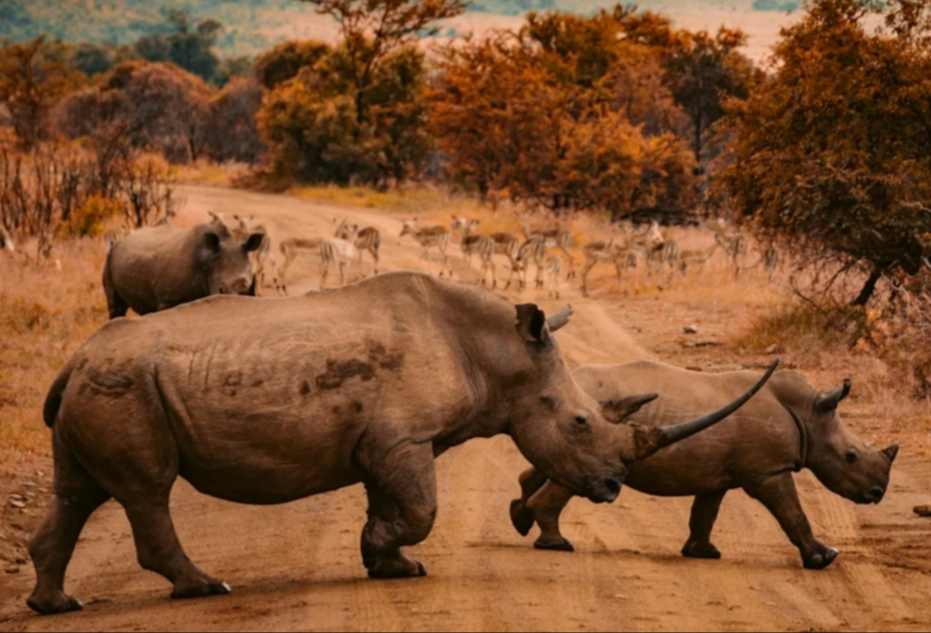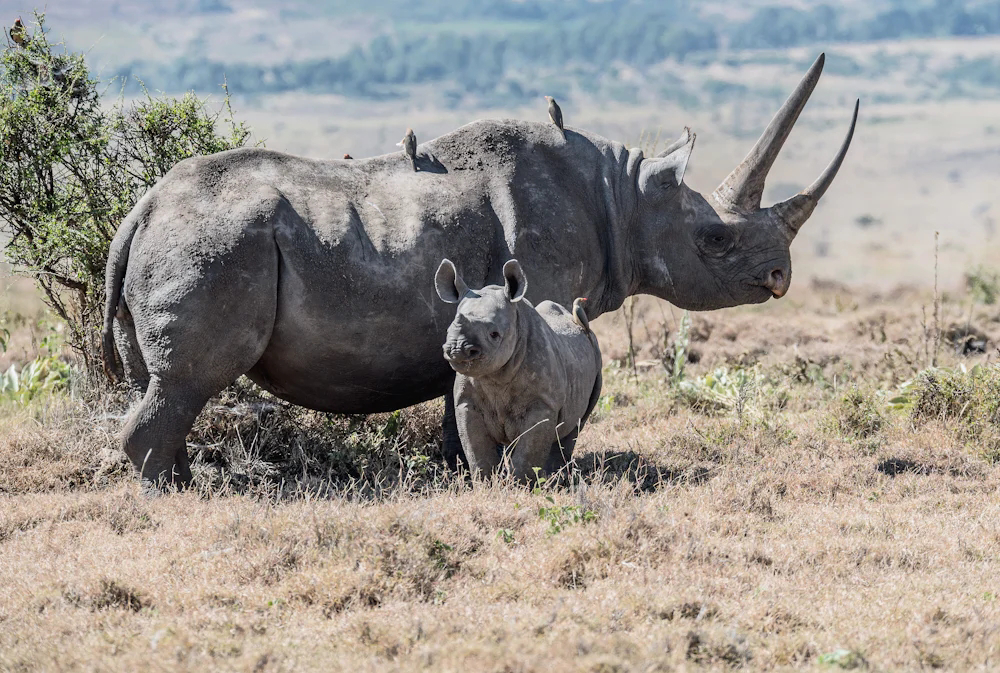1. A MISLEADING NAME
The word “rhinoceros” comes from Greek words meaning “nose” and “horn,” though some ancient rhinos, like the hornless Hyra Chyus, never had a horn.
Newborn rhinos may look tiny compared to their massive parents, but they arrive hornless. Their horns begin as small, soft bumps that gradually harden over the first few months of life. Baby rhinos are also highly dependent on their mothers and stay close to them for up to three years.
7. RHINOS COMMUNICATE THROUGH POOP AND PEE
Rhinos have an extraordinary way of communicating with one another—through scent markings in their dung and urine. Each rhino’s dung has a unique chemical composition that conveys information about their identity, reproductive status, and even their health. Rhinos use communal "toilet areas" called middens, where they leave their scent for others to decode.
You might think rhinos are more closely related to elephants due to their size, but they actually share a closer evolutionary link with horses and zebras. All three belong to the order Perissodactyl, or odd-toed ungulates, meaning they have an odd number of toes on their feet.
12. SONE RHINO "WALK ON THEIR TOENAILS"
Rhinos have three toes on each foot, but they don’t walk on the soles like humans do. Instead, they distribute their massive weight by using a thick, cushioned pad under their feet, and their toenails help support their steps—essentially making it look like they are walking on their toenails!
14. RHINOS HAVE A UNIQUE WAY OF DRINKING WATER
Unlike many other animals, rhinos often suck water into their mouths instead of lapping it up with their tongues.
The Importance of Mud Baths for Rhinos
Rhinos, the majestic giants of the wild, are often seen wallowing in mud pits, covering their thick skin with layers of wet earth. While it may seem like simple play, these mud baths serve a crucial role in their survival and well-being.
Cooling Down in the Heat
Rhinos inhabit warm climates, where high temperatures can be relentless. Unlike humans, they do not have sweat glands to regulate body temperature. Instead, they rely on external methods like mud baths to cool themselves down. The wet mud clings to their bodies, evaporating slowly and keeping them from overheating under the scorching sun.
Natural Sun Protection
The sun’s harsh rays can cause sunburn, even for animals with thick skin. By rolling in mud, rhinos create a natural sunscreen that shields them from the sun’s ultraviolet radiation. This protective layer minimizes skin damage and helps them stay comfortable in their habitat.
Defense Against Parasites
Mud baths also play a vital role in pest control. Rhinos are often plagued by insects such as ticks and flies, which feed on their blood and cause discomfort. When the mud dries, it forms a crust that traps and removes parasites when the rhino rubs against trees or rocks. This natural exfoliation keeps their skin healthy and reduces irritation from biting pests.
Skin Moisturization and Health
Despite their rugged appearance, rhinos’ skin is sensitive and prone to cracking if left dry. The moisture from mud baths keeps their skin hydrated and prevents it from becoming too brittle. This is especially important in arid environments where water sources may be scarce.
Rhino calves grow quickly, reaching up to half their adult size by the time they are three years old. Calves stay with their mothers for several years before becoming independent, with their mother's providing protection from predators during this time.
A gathering of rhinos is known as a "crash," an appropriate term given their powerful and imposing nature.







0 Comments